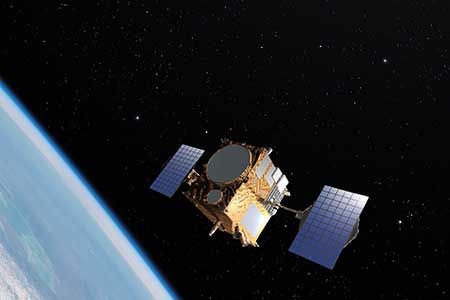 Washington has been known as The Evergreen State for decades, but given that more than half of the satellites in orbit are Washington made, we just may have to change our moniker to The Satellite State.
Washington has been known as The Evergreen State for decades, but given that more than half of the satellites in orbit are Washington made, we just may have to change our moniker to The Satellite State.
While SpaceX has been cranking out its Starlink satellites for years now in Redmond, new players are coming online, including Amazon’s plan to build thousands of Project Kuiper satellites just down the road from SpaceX. And let’s not forget LeoStella, which has been building Earth observation satellites for BlackSky and is working with Northstar Earth and Space on a new satellite constellation for monitoring space traffic.
Already, LeoStella has completed its 20th satellite, destined for delivery to Loft Orbital. The company’s new CEO, Tim Keinberger, has bigger plans for LeoStella on the drawing boards. “I think there’s a lot of growth potential here, and it’s rather unique to create a facility like this in Seattle,” he told Geekwire. “There used to be one space operation in Seattle, and it was called Boeing. It’s exciting to see the explosion of the space industry here.”
Located in Tukwila, just south of Seattle, the LeoStella facility is focused on developing and manufacturing midsize constellations of 10 to 50 satellites rather than the thousands of satellites SpaceX and Amazon envision. He points to BlackSky as an example. They have 16 satellites in orbit that transmit near real-time imagery to the Earth for its geospatial data platform.
The 22,000-square-foot headquarters can currently produce up to 40 satellites a year but can scale up to 60 as demand increases.
LeoStella’s competitive advantage is its ability to adapt to each customer’s needs. Some customers want a flight-ready satellite while others want the chassis only so they will fill it with electronics and mission-specific gear in-house. “We’re talking to a customer who wants to do a classified mission. They won’t tell us what it is, so, OK, that’s fine,” said Tim. “We’ll sell them the bus [that is, the structural chassis of a satellite]. They like the bus, and then they’ll finish the product somewhere else. That’s not unlike what we did for Loft. We basically sold them the bus.”
As for the future of Washington’s space industry, Tim says that driving down costs is essential to growth. He points to the development of electronic propulsion, 3-D and printed technology as logical pathways to achieving scale and affordability. “Technology needs to continue to innovate. That will eventually drive costs further down across a number of areas. If we can come up with more effective power methods and more efficient propulsion methods, those are probably the two biggest swingers.”
Technology, you say? That’s The Satellite State’s specialty!